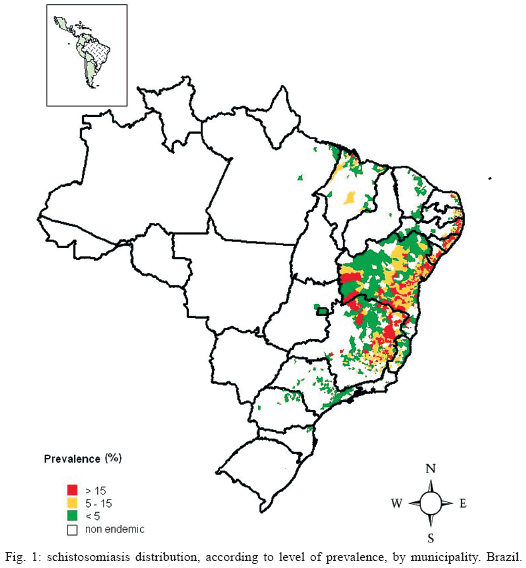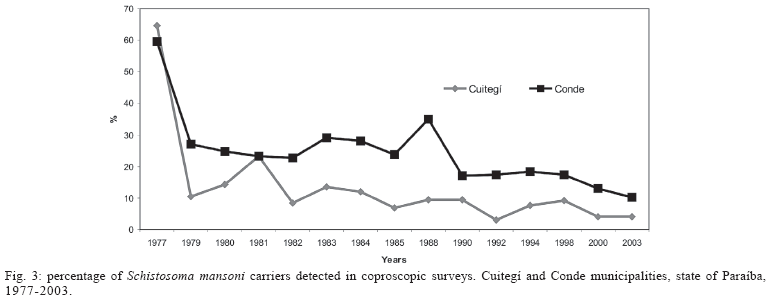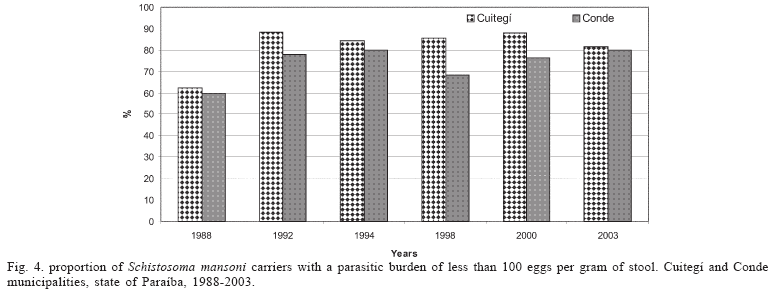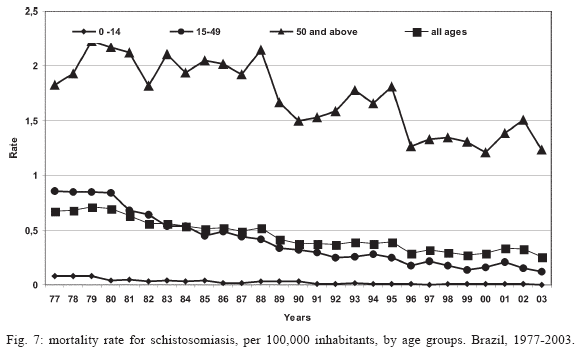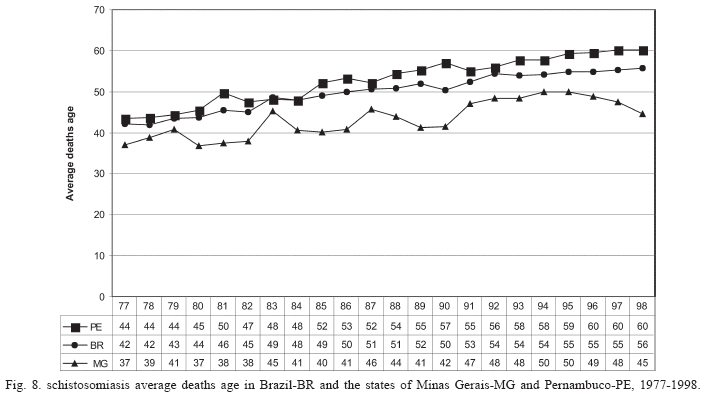The impact of the Schistosomiasis Control Programme (PCE) in Brazil was analyzed, covering the period 1976 to 2003, using the following indicators: percentage of Schistosoma mansoni carriers detected among the population examined in the coproscopic surveys (PPS): mortality rate for schistosomiasis, per 100,000 inhabitants (TME): hospitalization rate for schistosomiasis, per 100,000 inhabitants (TIE): average age of deaths caused by schistosomiasis (IMOE). There was a 38.5% reduction in the PPS after the introduction of the PCE, attributed to the treatment of carriers. Even in hyper-endemic municipalities, such as Conde and Cuitegí, in the state of Paraíba, the PPS fell more than 50% after the first year of treatment. The parasitic burden of the carriers also decreased in the two municipalities. The TME was reduced by 63.4% and the TIE by 77.3%. The mortality rate was highest among the 50-and-above age group. The country×s IMOE rose 32.3%. The IMOE was seen to be much lower in the state of Minas Gerais, where the PCE was only initiated in 1983, with very limited coverage.
schistosomiasis; morbidity; mortality; epidemiology; control

